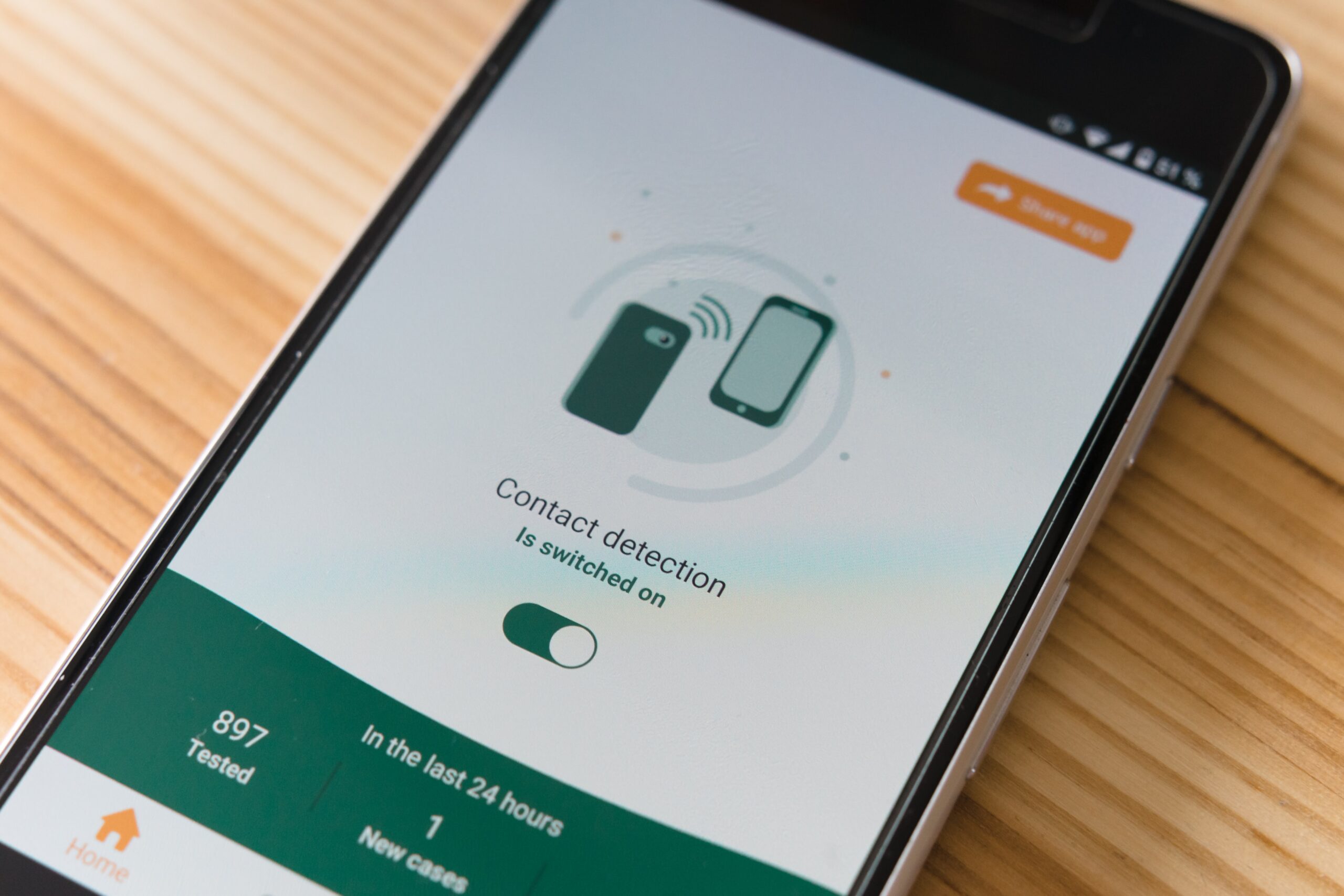How To Implement A Successful Loyalty Program For Customer Retention?
If you’re searching for ways to boost customer loyalty and retain your valuable clientele, look no further! This article aims to provide you with practical tips and strategies on implementing a successful loyalty program. From understanding the importance of customer retention to designing enticing rewards, we’ve got you covered. So, let’s dive in and discover how you can create a loyalty program that keeps your customers coming back for more!

Choosing the Right Loyalty Program Type
Points-based Programs
Points-based loyalty programs are one of the most popular types of loyalty programs. In this type of program, customers earn points for every purchase they make, and these points can be redeemed for rewards or discounts. Points-based programs are usually simple to understand and encourage customers to make repeat purchases in order to accumulate more points. This type of program is especially effective for businesses with frequent or high-value transactions.
Tiered Programs
Tiered loyalty programs categorize customers into different tiers or levels based on their spending or engagement levels. Customers can move up the tiers as they spend more or engage more with the brand, and each tier offers increasing benefits and rewards. Tiered programs provide a sense of exclusivity and status to customers, motivating them to achieve higher tiers and stay loyal to the brand. This type of program works well for businesses with a wide range of customers and varied spending patterns.
Paid Programs
Paid loyalty programs, also known as subscription programs, require customers to pay a membership fee in order to access exclusive benefits and rewards. This type of program can be appealing to customers who are willing to invest in a more premium experience and are looking for additional perks. Paid programs often offer advantages such as free shipping, early access to sales, or personalized recommendations. Businesses with a strong and dedicated customer base can benefit from implementing a paid loyalty program.
Gamification Programs
Gamification loyalty programs incorporate game-like elements to make the loyalty experience more fun and engaging for customers. These programs typically involve challenges, badges, and rewards for completing certain actions or achieving specific milestones. Gamification programs tap into customers’ natural competitive instincts and desire for achievement, creating a sense of excitement and enjoyment. Businesses wanting to add an element of entertainment and a unique experience to their loyalty program can consider implementing a gamification approach.
Coalition Programs
Coalition loyalty programs bring together multiple businesses or brands under one program, allowing customers to earn and redeem rewards across different participating businesses. This type of program offers customers a wide range of options and flexibility when it comes to earning and spending their rewards. Coalition programs are especially effective when the participating businesses complement each other or cater to similar customer segments. Implementing a coalition program can help businesses tap into a larger customer base and increase their visibility.
Setting Clear Objectives
Increasing Customer Retention
One of the primary objectives of a loyalty program is to increase customer retention. By offering rewards and benefits to loyal customers, businesses can incentivize them to continue making repeat purchases and remain engaged with the brand. Retaining existing customers is often more cost-effective than acquiring new ones, and loyal customers tend to spend more over time. Setting a clear objective of increasing customer retention allows businesses to focus their loyalty program efforts on strategies and initiatives that strengthen the bond between the brand and its customers.
Driving Customer Engagement
A successful loyalty program should also aim to drive customer engagement. Engaged customers are more likely to be loyal, spend more, and promote the brand through word-of-mouth. To encourage customer engagement, businesses can implement various tactics such as personalized offers, interactive experiences, and social interactions within the loyalty program. By establishing clear objectives for customer engagement, businesses can develop strategies that create a sense of community and foster deeper connections with their customers.
Boosting Sales and Revenue
Another important objective of a loyalty program is to boost sales and revenue. By offering rewards and incentives, businesses can motivate customers to make additional purchases or increase their average order value. Loyalty program members often spend more than non-members, and their loyalty could lead to increased customer lifetime value. It is crucial to set specific targets for sales and revenue growth in order to measure the success of the loyalty program and ensure that it aligns with the overall business objectives.
Identifying Targeted Customers
Segmenting the Customer Base
To implement a successful loyalty program, it is essential to identify and understand the targeted customers. By segmenting the customer base, businesses can categorize customers into different groups based on their demographics, purchase patterns, behavior, or preferences. This segmentation allows businesses to tailor their loyalty program offerings and communication to effectively resonate with each segment. By understanding the unique needs and desires of each customer segment, businesses can design a loyalty program that appeals to their specific interests and motivations.
Analyzing Customer Behavior
Analyzing customer behavior is a crucial step in identifying the targeted customers for a loyalty program. Businesses can use various methods such as data analysis, purchase history, and customer surveys to gain insights into customer preferences, motivations, and spending patterns. Understanding how customers interact with the brand, what products or services they prefer, and their purchase frequency can help businesses develop personalized loyalty program strategies that cater to their customers’ specific needs and desires.
Creating Customer Personas
Creating customer personas is an effective way to visualize and understand the targeted customers for a loyalty program. Customer personas are fictional representations of different customer segments, based on demographic information, interests, and behavior. By creating personas, businesses can humanize their customers and gain a deeper understanding of their motivations and preferences. This understanding enables businesses to develop loyalty program features and rewards that resonate with each persona, ultimately leading to higher engagement and loyalty.
Designing a Reward Structure
Defining Tangible Rewards
A key aspect of designing a successful loyalty program is defining the tangible rewards that customers can earn and redeem. Tangible rewards can include discounts, free products, store credits, or exclusive merchandise. The rewards should be valuable enough to encourage customers to participate in the program and attain the desired behaviors. Businesses should carefully consider the cost and feasibility of providing the rewards and ensure that they align with the brand’s image and customer expectations.
Introducing Experiential Rewards
In addition to tangible rewards, introducing experiential rewards can enhance the loyalty program’s appeal and create memorable experiences for customers. Experiential rewards can include VIP access to events, personalized services, exclusive behind-the-scenes tours, or unique travel experiences. These rewards go beyond material possessions and focus on providing customers with exceptional experiences that foster a deeper emotional connection to the brand. Experiential rewards can generate excitement, loyalty, and positive word-of-mouth recommendations.
Offering Exclusive Benefits
To make the loyalty program more enticing, businesses should consider offering exclusive benefits to program members. Exclusive benefits can include early access to new product releases, priority customer service, extended return periods, or personalized recommendations. By providing these exclusive benefits, businesses can make their loyal customers feel valued and special, increasing their satisfaction and loyalty. Exclusive benefits also create a sense of exclusivity, motivating customers to remain loyal and continue seeking the advantages of being a loyalty program member.

Establishing Program Rules and Policies
Determining Eligibility
Establishing clear eligibility criteria is essential to ensure that customers understand who can participate in the loyalty program. Eligibility criteria can include factors such as minimum age, geographic location, or purchase thresholds. By defining the eligibility criteria upfront, businesses can prevent confusion and ensure that only eligible customers can join the program. This clarity helps set expectations and ensures fairness among program members.
Setting Earn and Burn Ratios
Determining the earn and burn ratios is crucial for the loyalty program’s success. The earn ratio refers to the rate at which customers earn rewards for their purchases or actions, while the burn ratio defines how rewards can be redeemed or spent. The earn and burn ratios should strike a balance between being attainable for customers and feasible for the business. Setting realistic and appealing earn and burn ratios can drive customer engagement and motivate them to actively participate in the loyalty program.
Expiration Policies
Implementing expiration policies for earned rewards can create a sense of urgency and encourage customers to redeem their rewards in a timely manner. Expiration policies can include setting specific timeframes for reward validity or implementing rolling expirations where older rewards expire first. Businesses should consider their industry standards, customer behavior, and the frequency of customer purchases when defining expiration policies. Clear communication of expiration policies is crucial to avoid customer dissatisfaction.
Terms and Conditions
Establishing comprehensive terms and conditions for the loyalty program is essential to protect the business and ensure fair participation. Terms and conditions should outline the program’s rules, restrictions, and any limitations on reward redemption. They should also address privacy concerns, data collection, and the management of personal information. Clear and easily accessible terms and conditions provide transparency and build trust with customers, while also preventing any potential misunderstandings or disputes.
Building a Seamless Customer Experience
User-Friendly Sign-Up Process
To encourage customer participation, it is crucial to design a user-friendly sign-up process for the loyalty program. The sign-up process should be simple, intuitive, and require minimal effort from the customer. Businesses should collect essential customer information during sign-up, such as name and email address, while avoiding asking for unnecessary or intrusive details. To make the sign-up process even smoother, offering social media login options can streamline the registration process and expedite participation.
Integrating with Existing Systems
Integrating the loyalty program with existing systems is important to ensure a seamless customer experience. The loyalty program should be integrated with the business’s point-of-sale system, e-commerce platform, or any other systems that capture customer data and transactions. This integration enables automatic tracking of customer purchases and simplifies the process of earning and redeeming rewards. By integrating the loyalty program with existing systems, businesses can provide a consistent and hassle-free experience for their customers.
Multi-Channel Accessibility
To cater to different customer preferences and behaviors, the loyalty program should be accessible through multiple channels. This means offering online access through a dedicated website or mobile app, as well as offline access through in-store or phone-based interactions. Multi-channel accessibility allows customers to engage with the loyalty program in a way that is most convenient for them, whether it’s checking their rewards balance, redeeming rewards, or receiving program updates.

Promoting the Loyalty Program
Effective Communication Strategies
Promoting the loyalty program requires effective communication strategies to ensure that customers are aware of its benefits and value. Businesses should communicate the features and rewards of the loyalty program through various channels, such as email campaigns, in-store signage, website banners, or social media posts. It is important to highlight the unique advantages of the loyalty program and clearly explain how customers can participate and benefit from it. Regular program updates and personalized offers or recommendations can also be communicated to members to maintain their engagement.
Utilizing Social Media Platforms
Social media platforms provide a powerful tool for promoting a loyalty program and reaching a wider audience. Businesses can leverage social media platforms to share program updates, success stories from loyal customers, or exclusive offers. Engaging with customers through social media posts, contests, or interactive content can create buzz and encourage new customers to join the loyalty program. By actively utilizing social media platforms, businesses can expand their reach and effectively communicate the value of their loyalty program.
Creating a Sense of Urgency
To drive immediate action and encourage participation, creating a sense of urgency can be an effective strategy. Limited-time offers, exclusive rewards, or flash sales can create a sense of urgency and motivate customers to join the loyalty program or make a purchase. Urgency can be communicated through compelling marketing messages, countdown timers, or clear expiration dates for special offers. The sense of urgency creates a fear of missing out, prompting customers to take immediate action to avoid losing the opportunity.
Tracking and Analyzing Program Performance
Key Performance Indicators (KPIs)
Tracking the performance of a loyalty program requires identifying and monitoring key performance indicators (KPIs). KPIs can include metrics such as customer retention rate, customer lifetime value, growth in program membership, redemption rates, or customer satisfaction scores. By regularly analyzing these KPIs, businesses can understand the effectiveness of their loyalty program and make data-driven decisions to optimize its performance. KPIs provide valuable insights into customer behavior, program engagement, and overall program success.
Data Collection and Analysis
Collecting and analyzing customer data is essential for evaluating the effectiveness of a loyalty program. Businesses should track customer interactions, purchase history, reward redemption patterns, and program engagement metrics. This data can be analyzed to understand customer preferences, identify trends, and uncover opportunities for improvement. By leveraging data analytics tools and techniques, businesses can gain actionable insights that enable them to refine their loyalty program strategies and enhance the customer experience.
Continuous Program Optimization
A successful loyalty program requires continuous optimization based on the insights gathered from tracking program performance and analyzing customer data. Businesses should regularly review and evaluate the program’s effectiveness, identify areas for improvement, and implement necessary changes. This can involve refining the reward structure, introducing new benefits or features, or adjusting program rules. Continuous program optimization ensures that the loyalty program stays relevant, engaging, and aligned with the evolving needs and expectations of the customers.
Ensuring Program Scalability and Flexibility
Adapting to Customer Needs
To ensure the long-term success of a loyalty program, businesses must be willing to adapt to the changing needs and preferences of their customers. Customer expectations and market trends evolve over time, and loyalty programs must be flexible enough to accommodate these changes. Regular feedback gathering, surveys, and customer insights can help businesses understand customer preferences and anticipate their future needs. By adapting the program to better meet customer needs, businesses can maintain relevance and sustain customer engagement.
Adding New Partners or Rewards
To keep the loyalty program fresh and appealing, businesses can consider adding new partners or rewards to enhance the program’s value proposition. Adding new partners expands the range of earning and redemption options available to customers, providing them with more choices and variety. Introducing new rewards can also generate excitement and encourage customers to continue participating in the program. By regularly evaluating and adding new partners or rewards, businesses can ensure that the loyalty program remains attractive to their customers.
Adjusting Program Structure
As the business evolves, it may be necessary to adjust the structure of the loyalty program to align with new goals or strategies. This can involve modifying the earn and burn ratios, redefining program tiers, or introducing new program rules or benefits. Adjusting the program structure allows businesses to respond to changing market dynamics and customer expectations, ensuring that the loyalty program remains relevant and valuable.
Monitoring and Addressing Program Challenges
Dealing with Disengaged Customers
Disengaged customers can pose a challenge to the success of a loyalty program. It is important to monitor customer engagement and identify signs of disengagement early on. Businesses can track metrics such as inactive program members, low redemption rates, or declining participation to identify disengaged customers. To re-engage these customers, businesses can implement targeted marketing campaigns, personalized offers, or exclusive incentives. Regular communication, personalized recommendations, or gamification elements can also help reignite the interest and enthusiasm of disengaged customers.
Managing Program Costs
Implementing and running a loyalty program requires careful cost management to ensure its sustainability. Businesses should assess the costs associated with program design, rewards, ongoing maintenance, and administration. By analyzing the return on investment (ROI) and customer lifetime value (CLV), businesses can evaluate the program’s cost-effectiveness and make adjustments as needed. Implementing cost-saving measures such as partnerships or sponsorship opportunities can help mitigate program costs while still delivering value to customers.
Handling Technical Issues
Technical issues can disrupt the customer experience and have a negative impact on the loyalty program. It is crucial to have robust technical infrastructure in place and a dedicated support team to address any technical glitches or system failures promptly. Regular testing, monitoring, and maintenance of the loyalty program platform can help identify and resolve technical issues proactively. Quick and effective resolution of technical issues demonstrates a commitment to providing a seamless customer experience and helps maintain customer trust and satisfaction.
In conclusion, implementing a successful loyalty program for customer retention requires careful consideration and planning. By choosing the right loyalty program type, setting clear objectives, identifying targeted customers, designing a reward structure, establishing program rules and policies, building a seamless customer experience, promoting the loyalty program effectively, tracking and analyzing program performance, ensuring program scalability and flexibility, and monitoring and addressing program challenges, businesses can create a loyalty program that effectively retains customers, drives engagement, and boosts sales and revenue.




